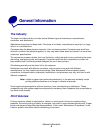
Print Material Testing
9
Perforations and Die-Cuts
If your form has perforations, the perforation line should stop 1.6 mm (0.06 in.) from each edge of the
form to avoid separating the form in the printer path, resulting in a jam. The location of the perforation
affects initial pick strength. Perforations closer to the edge may increase the number of jams. For
pressure sensitive materials such as labels, minimize the number of perforations that go through the
backing material, or liner, since these can also affect the strength of the form.
Perforations should be ironed so the print material lies flat, reducing nesting of forms. Edges should
be smooth and clean with no roll-over. Laser-perfs (also known as micro-perfs or data-perfs) provide
greater stability and are preferred. These smaller perforations do not normally nest or create
excessive paper dust and debris. Make sure paper chaff and dust created during the conversion
process are removed before packaging.
If perforations tent, or crease at the perforation line, the perfs may break, causing a paper jam.
Tenting may increase skew, cause double sheet feeding, or smear the toner on the print material
before fusing, resulting in poor print quality. To reduce tenting, use micro-perfs. If the print material is
lightly snapped as it moves through the printer, the perforations should hold without breaking.
Die-cutting is used to create shapes in a label or a card stock design. When designing labels, round
all corners to prevent delamination of the labels, and avoid cuts through the liner (anvil cuts). Back
splits and pop-out windows are also not recommended.
If perforations or die-cuts are part of the design of the print material, ties are recommended. These
small uncut areas (approximately 1.6 mm or 0.06 in.) help stabilize the form and prevent tearing at
perforations and die-cuts during printing.
For areas with die-cuts or perforations that create a small end product, or where die-cuts or
perforations intersect, ties on the corners of the design provide added stability. Ties may be located
anywhere along perforations or die-cuts. For pressure sensitive products, ties help prevent the labels
from peeling off the liner while in the printer. Ties cannot, however, be used to compensate for
inadequate release strength of the adhesive in label designs.
Note: For specific perforation and die-cut guidelines for your printer, see the appropriate
topic under “Printer Specifications” on page 27.
Debossing and Embossing
Avoid debossing and embossing materials. Embossing leads to nesting and double sheet feeds, and
the fusing process significantly reduces the height of the raised image. Printing too close to
embossments results in poor print quality and poor fuse grade.
Metallics
We do not recommend using metallics in forms, whether in inks or other materials, due to their
conductivity and their ability to bleed charge. This can interfere with toner transfer and cause poor
print quality.


















